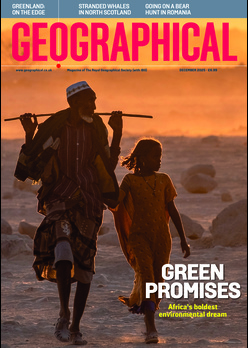
With more Dark Sky Places than anywhere else in the world, Utah’s high deserts are giving visitors front-row seats to the universe
By
Right now, we’re some 26,000 light years away from the centre of the Milky Way, on the edge of a spiral arm called the Orion Spur. From here on Earth, our galaxy appears as a luminous band of stars that arches across the night sky. On a cloudless night, we should all be able to see several thousand stars, all contained within our own Milky Way. But we can’t. For that, we need to be beneath truly dark skies.
In Utah’s Bryce Canyon National Park, stars are almost guaranteed. This high-desert plateau – famous for its spires and ‘hoodoos’, which have been sculpted by millennia of flooding, freezing and thawing – offers optimal conditions for astronomy. ‘The joke is you’re closer to the stars – as if a few thousand metres matters when you’re talking about thousands of light years,’ says Keven ‘The Dark Ranger’ Poe with a chuckle. ‘But being at that high elevation does mean there’s less atmosphere between you and the edge of space. All that nice, life-sustaining atmosphere makes things a little harder to see.’
Poe, an astronomer, science educator and owner of Dark Ranger Telescope Tours, is based just outside Bryce Canyon in southern Utah, which is itself located in the Intermountain West, a region that stretches from the Mexican border to Glacier National Park in northern Montana. It’s home to most of North America’s Dark Sky Park and Places – sites officially certified for their clear night skies by DarkSky International. The largest cluster – 26 in all – can be found scattered across Utah, where the dry desert air helps to reduce light pollution from neighbouring towns, many of which have installed dark-sky-friendly outdoor lighting. ‘When humidity is high, light pollution can spread quite some distance as the little photons of light bounce off in all directions from every water vapour molecule they encounter,’ explains Poe. ‘Dry air prevents that scatter. But as much as anything else, it’s the challenge of living in the desert that makes Utah such a great place to see stars. Wherever it’s harder for humans to make a go of it, you’ll find less light pollution – our biggest obstacle to clear night skies.’
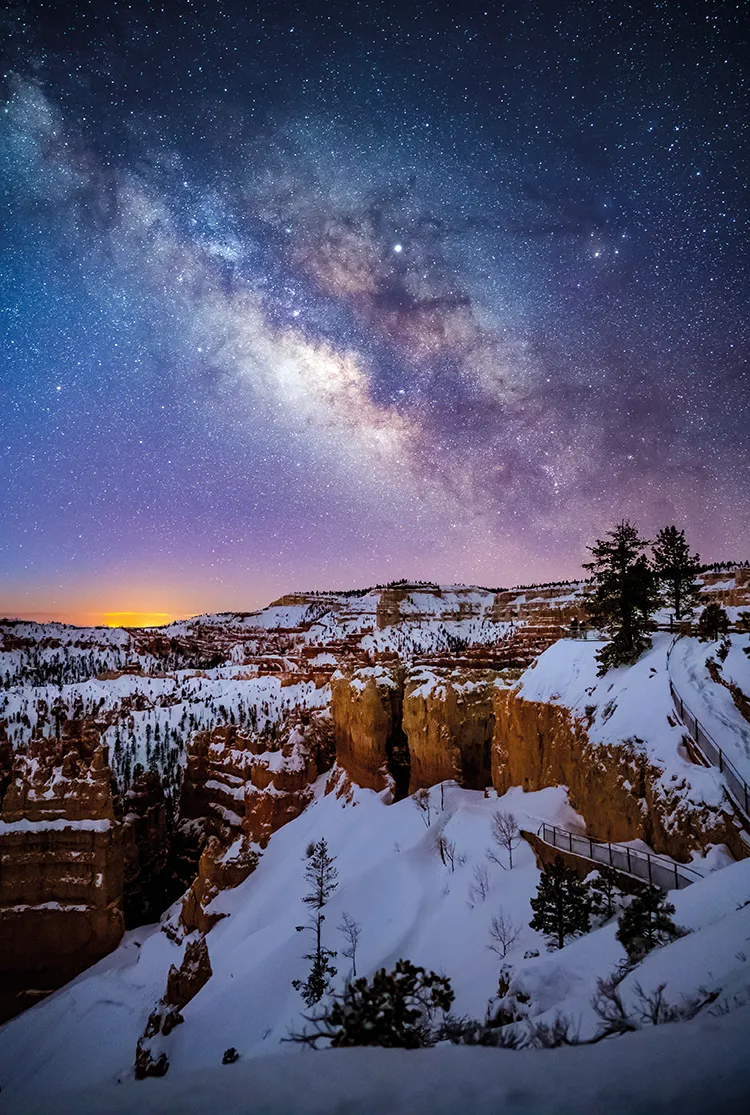
Light pollution, caused by excessive artificial light at night, has been on the rise since the early 19th century. In 2016, astronomers reported that the Milky Way was no longer visible to one-third of the global population, most of whom live close to brightly lit urban centres. Data from 2011–22 show the average night sky growing almost ten per cent brighter each year, leading to fewer visible stars, and if this trend continues, scientists say that key constellations could be indecipherable within 20 years. ‘Light pollution has become such a problem that telescopes have had to be moved into orbit to escape it,’ says Poe.
Since 1988, DarkSky International has been raising awareness of the value of dark, star-filled night skies – for astronomers, but also for our health and the health of our natural ecosystems. Today, more than 200 sites across the world have been designated as Dark Sky Places, where conservationists and communities have worked to reduce or prevent new sources of light pollution.

At Bryce Canyon, a Gold Tier Dark Sky Place, many of Poe’s guests come specifically to see the Milky Way. ‘It’s surprising how far people travel to us. We’ve always had Europeans coming to Utah to see the red rocks and wildlife, but now they also come for the night sky. We try to send them away with little homework assignments, so that maybe they can become a champion of the dark sky in their own neighbourhood,’ he adds. ‘We even get people from other dark places, such as Alice Springs in Australia, who come to see a whole different side of the universe to what can be seen in the Southern Hemisphere.’
On any given night, visitors to Utah may look up to see Jupiter, 48 light minutes away, the ring nebula, 1,500 light years away, or the Andromeda Galaxy, more than two million light years away. Poe, who began work as an astronomy interpreter for the National Parks Service, has invested in a range of powerful telescopes that can look deep into space, far beyond our own system. ‘We had a couple of small telescopes in the federal government, but there’s never money for anything good – for anything fun, I guess I should say.’ What started as a side hustle has evolved into a family-run tour company that now hires astronomers from across the USA and abroad.
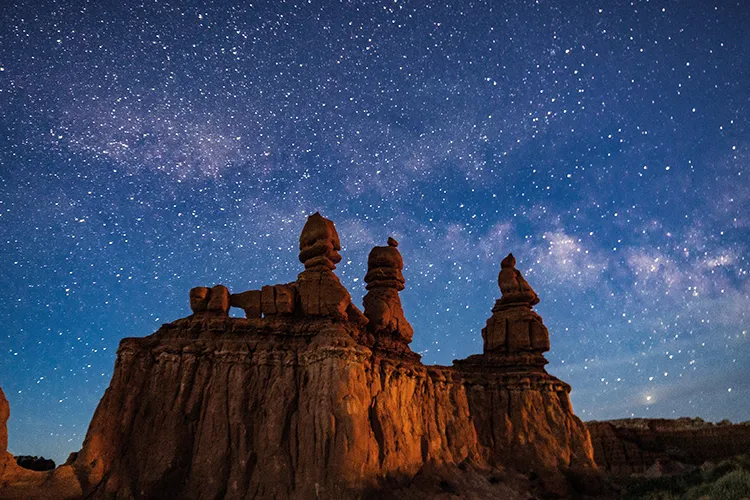
As interest in Dark Sky Places has grown among both locals and tourists, events known as ‘star parties’ have sprung up at sites across Utah, attracting astronomy enthusiasts from near and far. ‘Utah is much more varied than many folks think,’ says Brock James, a park ranger at Antelope Island State Park. ‘It’s right at the nexus between the Rocky Mountains, the Great Basin, the Colorado Plateau and the Great Plains, all very different geographical regions. So for folks who want dark skies but also want a variety of outdoor experiences, we’ve got tons of opportunities. For a classic desert experience with big sweeping vistas, canyon systems and red rocks, we’ve got Goblin Valley State Park, which is also one of our best dark sky areas. For a mountainous getaway with pine tree forests there’s Wasatch Mountain State Park, which is working towards dark sky certification. For a day at the lake there’s East Canyon State Park and Jordanelle State Park, and we’ve even got alpine landscapes in the Heber Valley.’
At Antelope Island State Park, some 65 kilometres north of Salt Lake City, star parties can have upwards of 1,000 telescopes as amateur and expert astronomers gather to watch the sky. ‘Even if you don’t have a telescope, you’ll have ample opportunities to look at very cool things through someone else’s,’ says James. ‘They love sharing their passion and they can tell you all about how you’re looking at a globular cluster, and how it formed from two solar systems that crossed paths. They’ll go deep into the science behind what you can see.’

Enjoying this article? Check out our related reads:
Antelope Island is the largest island in the Great Salt Lake, the remnant of an ancient inland ocean. Despite being so close to the Salt Lake metropolitan area, the park is also a certified Dark Sky Place. ‘It would be very easy for all the light pollution that exists there to totally wash out our skies,’ says James, ‘but we’re sheltered by the mountains that run down the island’s spine.’ The rugged landscape means minimal public utilities, preserving the island as a very wild space for stargazing and making it popular with hikers during the day. ‘One of my favourite things to do out here is hiking,’ James adds. ‘We have some very, very old stone that’s estimated to be about 3.5 billion years old – it’s some of the oldest exposed surface stone in the world. You come across formations where the stone looks like frozen flames or coral reef. You’re able to touch it and feel a connection to this unimaginably deep span of time.’
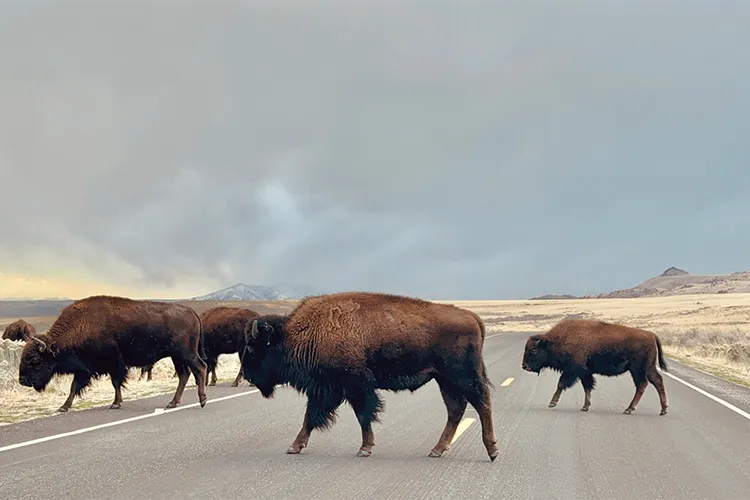
Every morning, James drives over the causeway that links the park to the city, across the salt flat shoreline of the lake – one of his favourite parts of the day. ‘The pools act like perfect, giant mirrors that reflect the mountain ranges; it’s magical.’ But it’s in the evening, just before the stars start to shine, that visitors can see one of the island’s most impressive sights. ‘Around sunset, you’re quite likely to get stopped by a whole herd of bison crossing the road and heading up into the hills to drink. It’s a really amazing chance to get up close to them – but you’ll want to be in your vehicle when that happens.’
As the afternoon shifts into night, visitors can finally start to spot the park’s nocturnal inhabitants – little and big brown bats, great horned and burrowing owls, American badgers and bobcats. ‘Some of the island’s most charismatic animals are going to be more active at night,’ says James. ‘One of the fun activities we do periodically throughout the year are our Scorpion Safaris. Scorpions glow brightly under a UV light, so you can go out searching around the island for them.’ Coyotes, says Poe, are another example of a species almost never seen by visitors during the day. ‘People don’t know the coyote. They know wolves, they’ve heard recorded wolf song. But the coyote’s song is like something out of this world.’

VISIT UTAH
visitutah.com

DARK RANGER TELESCOPE TOURS
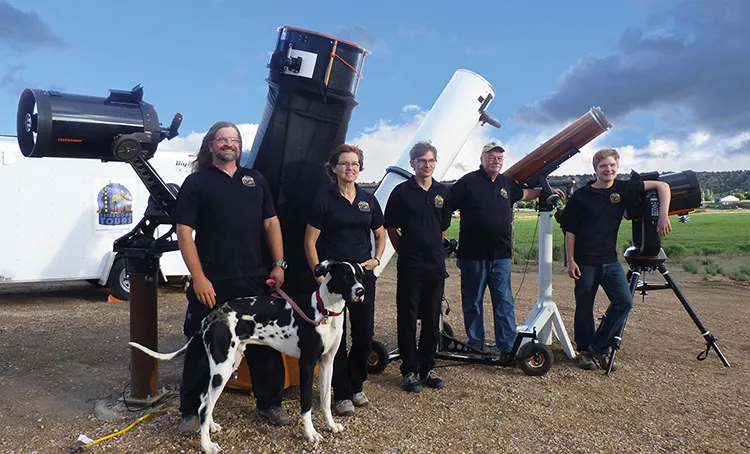
Join Keven ‘The Dark Ranger’ Poe and his team at the Dark Ranger Observatory, on the outskirts of Bryce Canyon, for an evening of stargazing and astronomy talks. Spot Saturn’s rings with the help of Poe’s collection of 19 ‘big telescopes’, or lie back in a zero-gravity chair to watch the constellations and the Milky Way. For an introduction to astrophotography, book a small private tour with expert tuition. darkrangertelescopetours.com
HOLIDAY RIVER EXPEDITIONS
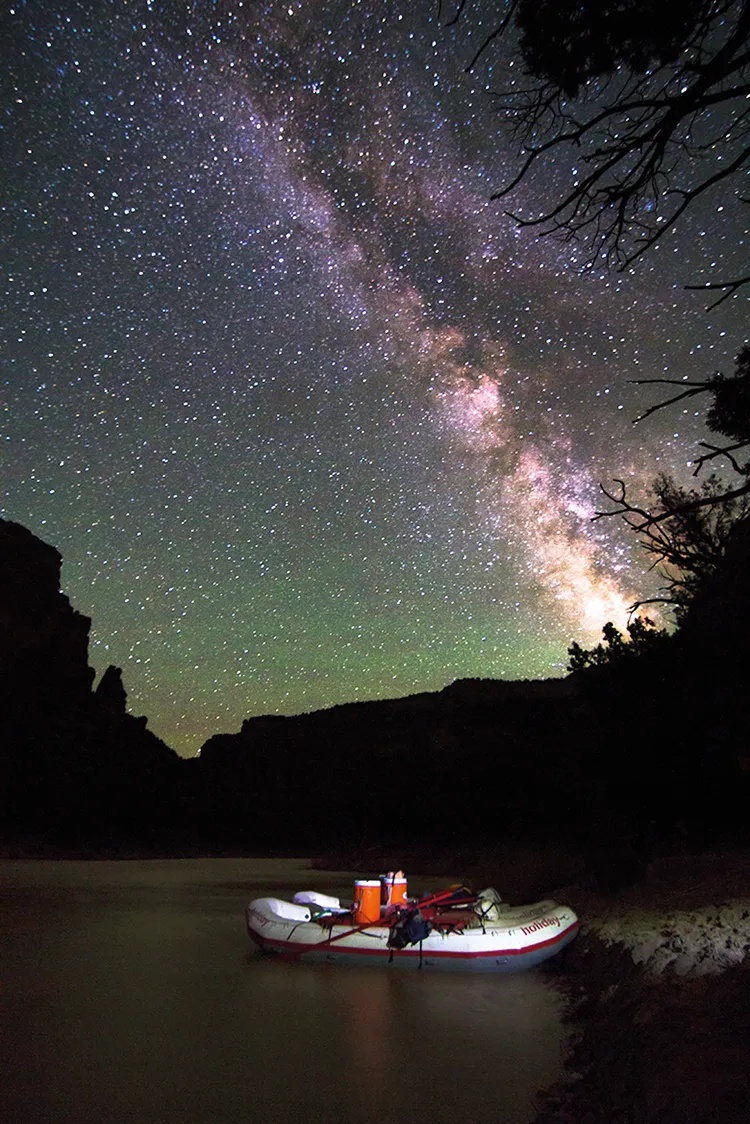
The Colorado Plateau, a vast desert landscape carved by winding rivers, offers some of the most scenic – and exhilarating – white water rafting in the USA. Holiday River Expeditions’ stargazing river trips, which are led by an expert astronomer, follow the river and its tributaries through dark sky sites such as Dinosaur National Monument and Canyonlands National Park. Trip itineraries range from gentle, family-friendly float trips to thrilling whitewater adventures. Explore archaelogical sites, visit prospector cabins and dine beneath the stars. bikeraft.com
DINOSAUR NATIONAL MONUMENT

A unique glimpse into a time when dinosaurs roamed across Utah. At the Quarry Visitor Centre near Jensen, visitors can explore where the fossilised remains of more than 14 species of dinosaur have been preserved in an ancient river sandbar. Researchers have excavated more than 800 palaeontological sites, unearthing unique finds that include a fossilised juvenile stegosaurus. nps.gov/dino
UNDER CANVAS ZION
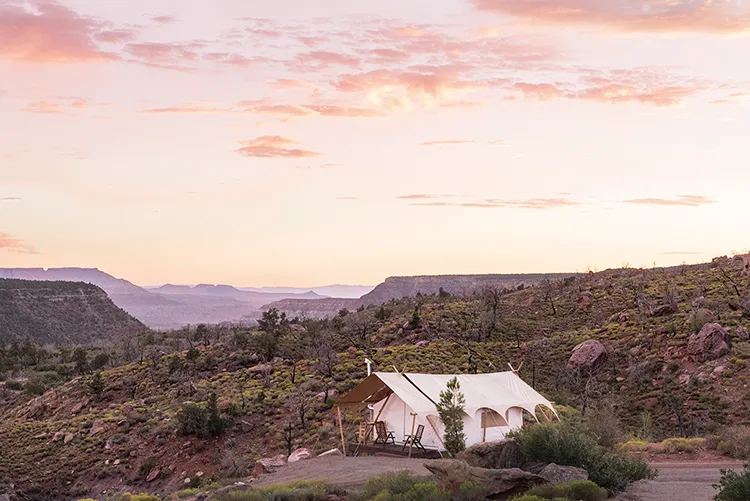
Spend a night under the stars, just outside Zion National Park, surrounded by stunning sandstone cliffs, red rock and wide-open desert skies. This glamping retreat offers easy access to Zion’s best-known hiking trails. The camp’s lighting has been specifically chosen to minimise light pollution so that guests can enjoy the night skies from their private deck, or while sampling s’mores around the communal fire pits. For unparalleled stargazing, opt for Stargazer Tents with sky-viewing windows. Guests can also join guided astronomy hikes and talks, or use the camp’s telescope to explore the stars. undercanvas.com
SALT LAKE CITY

You don’t have to go far from the city to find dark skies filled with stars. In the shadow of the Wasatch Mountains, Salt Lake City serves as an excellent base for exploring Antelope Island, Jordanelle and East Canyon state parks, and Timpanogos Cave National Monument – a network of limestone caverns filled with stalactites, fossils and bats. While you’re in town, be sure to stop by the Clark Planetarium for an immersive journey through space and science, or visit the Natural History Museum of Utah. visitsaltlake.com
MOAB

This former mining town is often seen as a gateway to Arches and Canyonlands national parks, but Moab has plenty of options for outdoor enthusiasts, from horseback riding to ziplining. Take in some of canyon country’s best views from Dead Horse Point State Park – a quieter alternative to the Grand Canyon with a similar wow factor. Later, refuel at one of the restaurants along Main Street. discovermoab.com
An earlier version of this story misquoted Kevin Poe as saying ‘there’s so much light pollution from the surface of the Earth that it’s even a factor for orbiting space telescopes.’ This has now been corrected.

